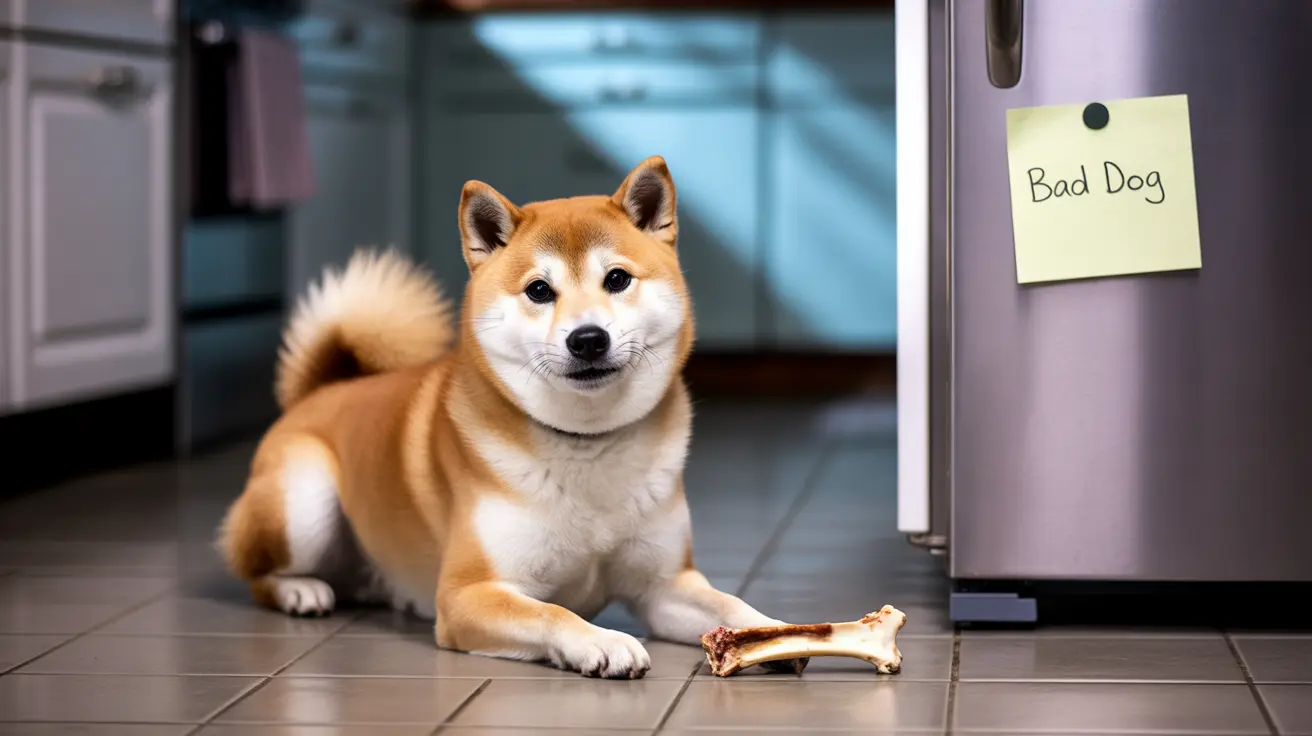Finding out your dog has eaten a rib bone can be a frightening experience for any pet owner. Whether it's a cooked or raw rib bone, this situation requires immediate attention as it can lead to serious, potentially life-threatening complications. Understanding the risks and knowing how to respond quickly could save your dog's life.
In this comprehensive guide, we'll explore what to do if your dog ate a rib bone, identify the potential dangers, and provide expert advice on preventing future incidents. We'll also discuss safe alternatives to satisfy your dog's natural chewing instincts.
Immediate Actions When Your Dog Eats a Rib Bone
If you've just discovered your dog ate a rib bone, don't wait for symptoms to appear before taking action. Contact your veterinarian immediately, even if your dog seems fine. The risks associated with bone ingestion can develop quickly and may not be immediately apparent.
While waiting to speak with your vet, observe your dog closely for any signs of distress, such as:
- Excessive drooling or pawing at the mouth
- Gagging or attempts to vomit
- Difficulty breathing
- Unusual lethargy
- Signs of abdominal pain
Understanding the Dangers of Rib Bones
Immediate Risks
Rib bones pose several immediate dangers to dogs, including:
- Choking hazards from bone fragments
- Damage to teeth and gums
- Throat injuries from sharp edges
- Potential blockage in the esophagus
Long-term Complications
Even if your dog seems fine initially, serious complications can develop over time:
- Intestinal blockages requiring surgery
- Internal bleeding from bone splinters
- Severe constipation
- Peritonitis from intestinal perforation
- Bacterial infections from contaminated bones
Veterinary Treatment and Diagnosis
Your veterinarian may perform several procedures to assess the situation:
- Physical examination
- X-rays to locate bone fragments
- Blood tests to check for infection
- Ultrasound to identify potential blockages
- Emergency surgery if necessary
Prevention Strategies
The best way to handle rib bone incidents is to prevent them from happening:
- Secure garbage bins with tight-fitting lids
- Clear plates and cooking areas immediately after meals
- Inform guests and family members not to give bones to your dog
- Keep counter surfaces clear of food items
- Store leftover bones in sealed containers
Safe Alternatives for Dogs Who Love to Chew
Instead of rib bones, consider these safer alternatives:
- Veterinarian-approved dental chews
- Durable rubber toys designed for heavy chewers
- Kong toys filled with dog-safe treats
- Specially designed synthetic bones
Frequently Asked Questions
What should I do immediately if my dog eats a rib bone?
Contact your veterinarian immediately for professional guidance. Monitor your dog closely for signs of distress and follow your vet's instructions precisely.
Why are rib bones particularly dangerous for dogs compared to other bones?
Rib bones are especially dangerous because they're prone to splintering into sharp fragments that can cause internal injuries. They're also sized in a way that makes them easy for dogs to swallow whole, increasing choking risks.
How can I prevent my dog from eating rib bones and other hazardous items?
Implement strict household rules about food disposal, secure garbage bins, and never leave food unattended. Educate all family members about the dangers of feeding bones to dogs.
What are the symptoms I should watch for if my dog has ingested a rib bone?
Watch for vomiting, lethargy, loss of appetite, difficulty defecating, abdominal pain, and unusual behavior. Any of these symptoms warrant immediate veterinary attention.
Are there any safe alternatives to rib bones for my dog's chewing needs?
Yes, there are many safe alternatives including specially designed chew toys, dental treats approved by veterinarians, and durable rubber toys designed for heavy chewers.
Remember, while dogs may naturally be drawn to bones, it's our responsibility as pet owners to protect them from potentially dangerous items. Always prioritize your dog's safety over temporary enjoyment, and consult with your veterinarian about appropriate chew toys and treats for your specific dog's needs.






